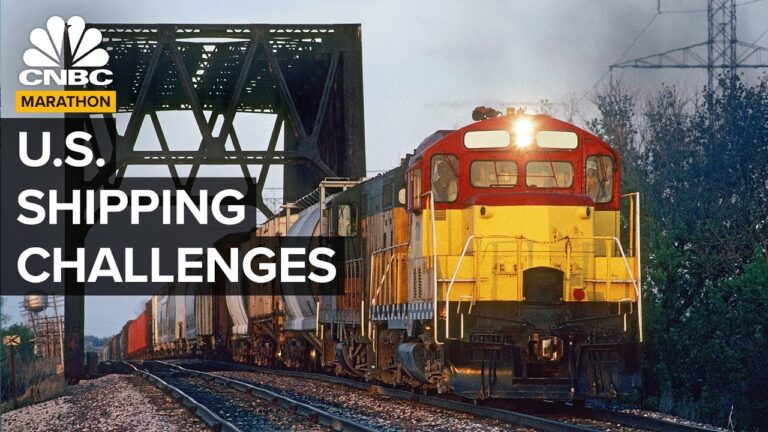Learn Why the U.S. Shipping Industry is Facing Blockages
Learn how freight railroads became so profitable and how the industry plans to evolve to stay on top. The United States lags behind the rest of the world when it comes to passenger trains but when it comes to the freight railroad the U.S. is dominating.
The U.S. freight rail network operates over 140,000 miles of privately-owned track in every state except Hawaii, according to the Association of American Railroads. It moves one-third of all U.S. exports and roughly 40% of long distance freight volume.
The Port of Los Angeles, the busiest port in North America, saw record volume in 2021. Imports including furniture, car parts and apparel surged to a record 5.5 million TEU’s in 2021, a 13% increase from the previous high in 2018. A TEU or twenty-foot equivalent unit is the industry standard to measure cargo capacity for ships and terminals.
One 20 ft container can hold about 400 flat-screen TVs. But along with that volume came an array of headwinds impacting everyone from retail stores and large manufacturers to portside communities. Lastly, CNBC reviews why the U.S. and Canada haven’t done more claim the Arctic regions available for shipping. Two of the largest shippers in the world, MSC and Maersk, told CNBC they’ve decided not to ship in the Arctic.
MSC cited both environmental degradation and unpredictability issues, among other considerations. Others, though, argue global environmental conditions could improve, with reduced carbon emissions from shorter transits. Arctic sea lanes might be ice-free in the summertime by 2035, according to scientists. That could mean faster global shipping times, and Russia and China are already taking the lead on their side of the frozen North.
So why aren’t the U.S. and Canada doing more? “It’s really a question of saving shipping cost-saving time versus that lack of predictability,” Gabriella Gricius from the North American and Arctic Defense and Security Network told CNBC.
CNBC


